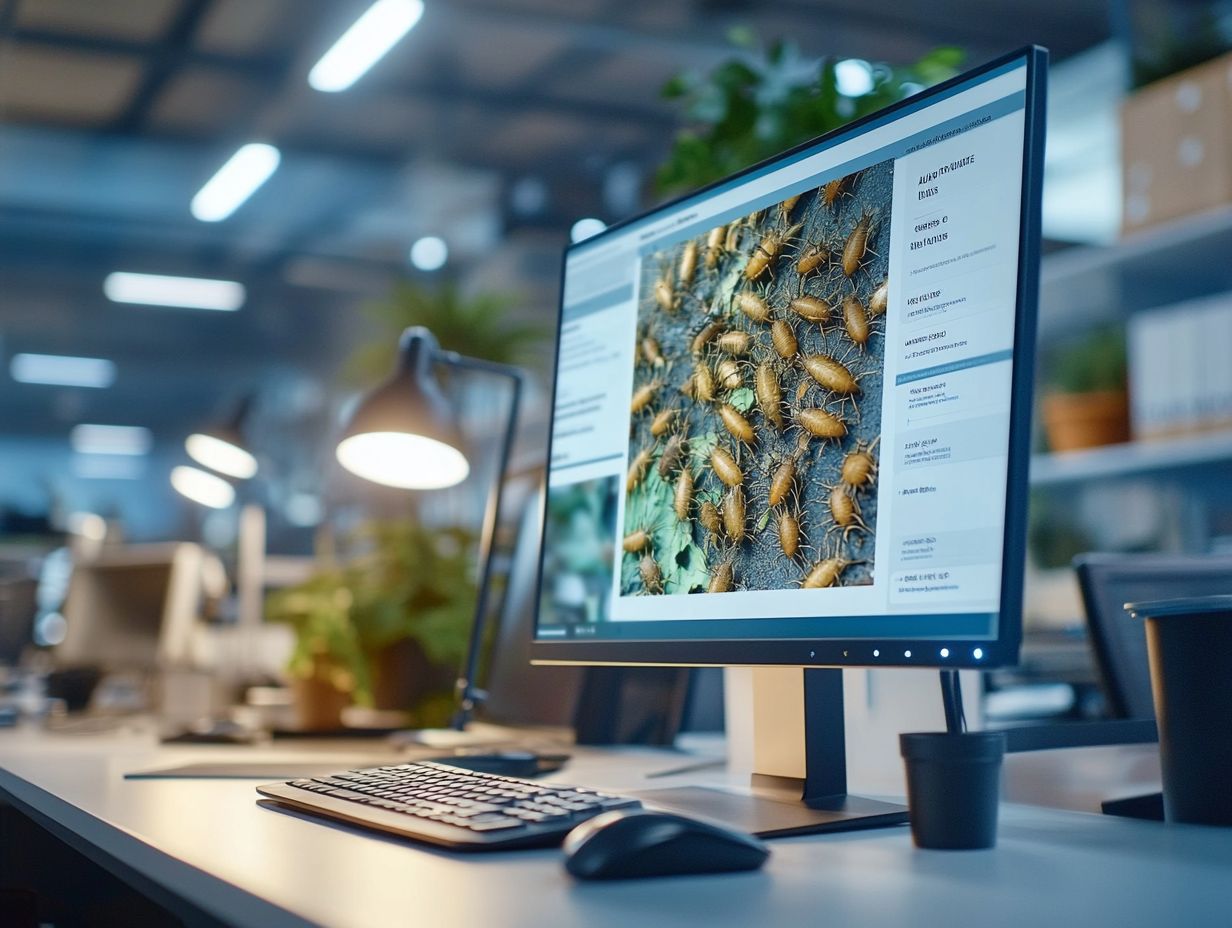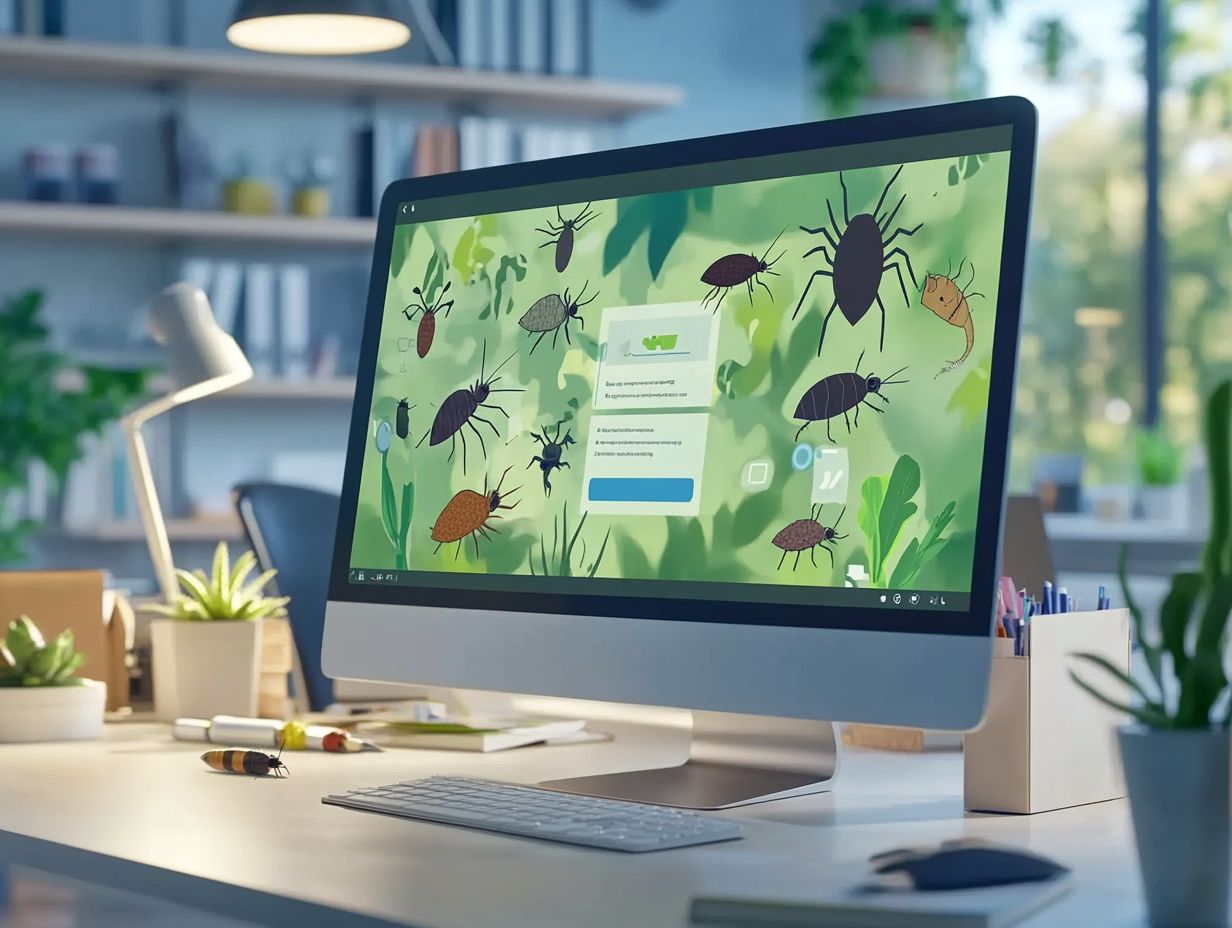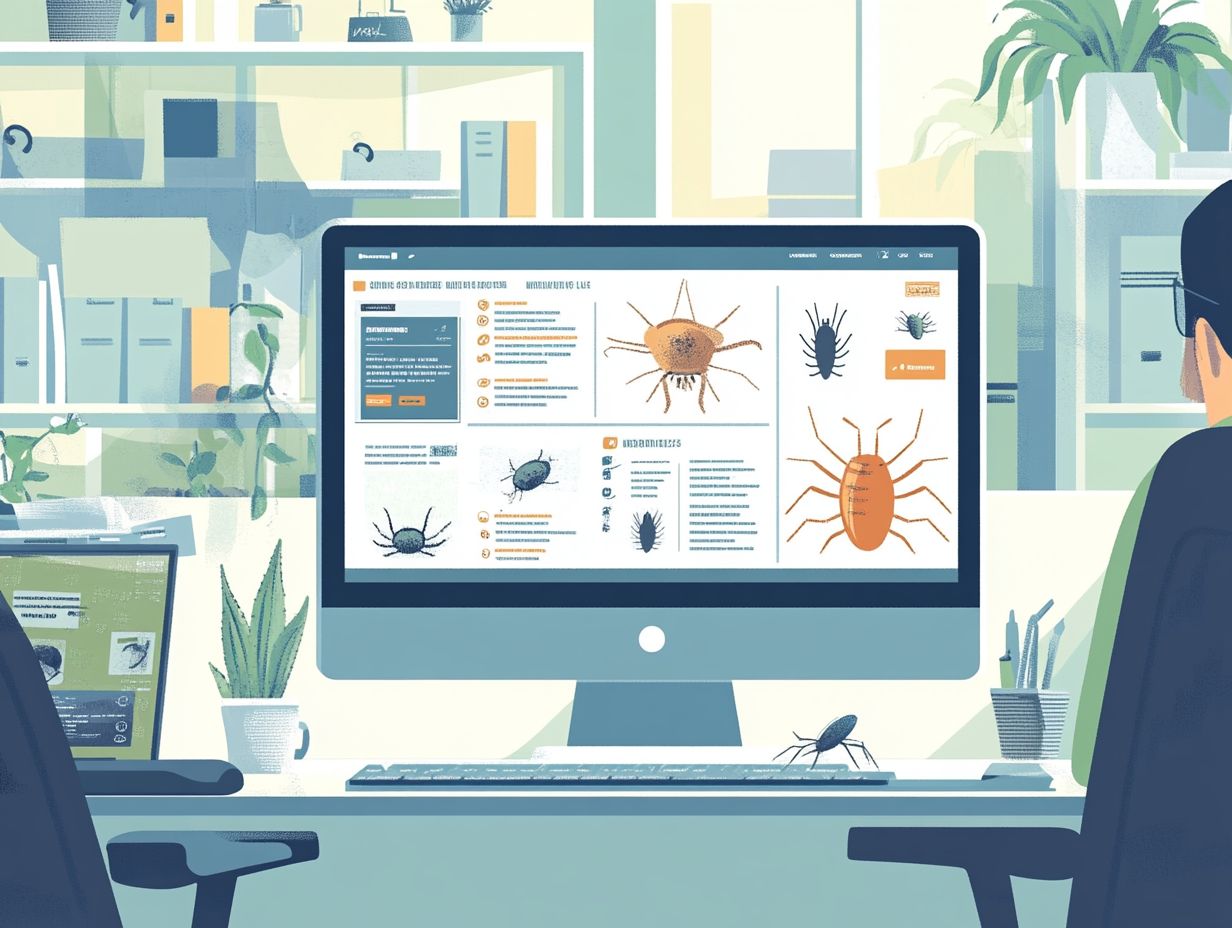In the competitive world of pest control services, standing out is crucial, and Pay-Per-Click (PPC) advertising can be a total game-changer for you.
This article dives into the benefits of using pest control PPC, explaining how it works and the essential steps you need to take to set up a successful campaign.
From picking the right keywords to crafting compelling ad copy, this guide has all the best practices and common pitfalls you should avoid.
You’ll also discover the top platforms for your ads and learn how to measure your success effectively. Whether you're just starting with PPC or looking to refine your strategy, this comprehensive guide has got your back.
Why Use Pest Control PPC?

If you’re in the pest control business, using PPC (pay-per-click) advertising is a game changer for reaching potential customers in your area. With a solid PPC strategy, you can really amp up your online advertising efforts and get in front of people specifically looking for pest control services, whether they need help at home or for their business.
This approach not only boosts your visibility on platforms like Google Ads but also improves your lead generation, conversion rates, and, most importantly, your return on investment (ROI).
What Are the Benefits of Using Pest Control PPC?
Utilizing pest control PPC can bring you a ton of benefits, like boosting lead generation and improving conversion rates, which ultimately means a solid ROI for you. By strategically allocating your ad budget, you can reach the right people who are actively looking for pest control services, whether they need pest prevention or pest elimination.
This approach not only sharpens your targeting but also delivers immediate results, which really sets it apart from traditional marketing methods. By segmenting your audience, you can customize your campaigns to attract homeowners dealing with specific pest problems.
Plus, leveraging data-driven insights helps you analyze the competition, so you can stay ahead of market trends and your rivals. You can also adapt your campaigns to seasonal trends, making sure your marketing efforts hit when pest activity peaks, which maximizes engagement and service bookings.
Integrating PPC advertising gives you a responsive strategy that aligns your business goals with what your customers need.
How Does Pest Control PPC Work?
Pest control PPC is pretty simple: you bid on keywords related to your services, and when potential customers search for those terms, your ads might pop up on the search engine results page.
By using platforms like Google Ads, you can fine-tune your ad campaigns by choosing relevant keywords that connect with pest infestations, pest biology, and pest identification.
This helps boost your quality score and overall ad performance, making sure you get noticed by those who need your services.
What Are the Steps Involved in Setting Up a Pest Control PPC Campaign?
Setting up a successful pest control PPC campaign involves several key steps, and it all starts with thorough keyword research. You need to identify the terms your target audience is using when they’re looking for pest management solutions. This foundational work will help you create compelling ad copy and optimize your landing pages to turn users into customers, making sure your ad budget is used effectively for maximum impact.
As you analyze search volume and competition, focus not only on those high-ranking keywords but also on long-tail variations that might give you better conversion rates because they’re more specific. Once you’ve nailed down your keywords, don’t forget to craft engaging ads that speak directly to the needs of your segmented audience. Using targeted ad extensions to highlight your unique selling propositions is a must.
After that, make sure your landing pages are optimized for a seamless user experience. This means incorporating persuasive elements and clear calls to action that guide users on what to do next. Lastly, employing tracking pixels can provide you with valuable data on user behavior. This insight will help you understand how your campaigns are performing and enable you to make informed adjustments to your budget allocation and audience targeting strategies.
What Are the Best Practices for Pest Control PPC?
Implementing best practices in your pest control PPC campaigns can really amp up their effectiveness and give your return on investment a nice boost. By honing in on keyword optimization, creating compelling ad copy, and keeping a close eye on key metrics, you can make sure your campaigns don’t just attract clicks but also turn those leads into loyal customers looking for pest prevention and elimination services.
How to Choose the Right Keywords for Pest Control PPC?
Choosing the right keywords for your pest control PPC campaign is super important because they influence how visible your ads are and how relevant they are to potential customers. When you dive into comprehensive keyword research, including checking out seasonal trends and potential negative keywords, you can effectively target the right audience and avoid wasting money on ads that don’t hit the mark.
Using various techniques and tools can really boost your keyword selection game. For example, platforms like Google Keyword Planner or SEMrush can give you fantastic insights into high-search-volume and low-competition keywords that match your pest control services.
Keeping an eye on your competitors' keywords can also help you spot gaps in your strategy. It’s especially crucial to monitor seasonal keywords, as certain pests tend to pop up more during specific times of the year.
And don’t forget about negative keywords! Implementing these ensures your ads won’t show up for irrelevant searches, which helps you refine your targeting and maximize your ad budget efficiency.
How to Write Effective Ad Copy for Pest Control PPC?

Writing effective ad copy for your pest control PPC campaigns is key to getting potential customers to click and explore your services. By crafting a clear call-to-action and ensuring your ad relevance matches the search intent, you can significantly enhance the user experience and drive those conversion rates higher.
Focus on what truly matters to your audience, like safety, quick response times, and the promise of effective pest elimination. Take some time to analyze the specific pain points and challenges your potential clients face, and make sure your messaging reflects those concerns. It’s important to use language that resonates with them while keeping things clear and straightforward.
Pair strong, actionable phrases like "Call Now for a Free Consultation" or "Schedule Your Inspection Today!" with content on your landing page that aligns with the promises made in your ads. This kind of alignment not only builds trust but also creates a smooth journey from interest to action, helping you convert those clicks into loyal customers.
What Are the Key Metrics to Track for Pest Control PPC?
Tracking key metrics in your pest control PPC campaigns is crucial for understanding how they’re performing and how effective they are. Important metrics like conversion rate, click-through rate, and return on investment (ROI) give you valuable insights into how well your ads are resonating with your audience. Plus, they help you figure out where you might need to make adjustments to improve overall ad performance.
Don’t overlook metrics like cost per acquisition (CPA) and impression share—they can really shed light on how efficiently your budget is being used and how often your ads show up compared to your competitors. Keeping an eye on these metrics regularly helps you spot trends and identify areas for improvement.
With this data at your fingertips, you can make smart decisions to refine your targeting strategies, enhance your ad copy, or adjust your bidding options. All of this leads to a more optimized and effective pest control PPC campaign.
The real power of these insights is that they can drive better results and ensure that your investment translates into the outcomes you’re aiming for.
What Are the Common Mistakes to Avoid in Pest Control PPC?
By avoiding common mistakes in your pest control PPC campaigns, you can save both time and money while boosting your ad performance.
A lot of advertisers miss the mark on the importance of negative keywords, don’t use ad extensions effectively, and forget to target the right audience. These oversights can lead to lackluster results and wasted ad budgets.
So, keep an eye on these details to make the most of your campaigns!
Not Using Negative Keywords
One of the biggest pitfalls you might face in pest control PPC is not using negative keywords, which can lead to irrelevant clicks and wasted ad spend. By strategically selecting negative keywords, you can refine your ad targeting and make sure that only users genuinely interested in pest control services see your ads.
Think of negative keywords as your personal filters that keep your ads from showing up in searches that don't really connect with what you offer. For example, terms like "free" or "DIY" might attract users who are just looking for cost-free solutions or do-it-yourself pest removal, rather than people who are willing to pay for professional services.
By excluding these terms, you can focus your budget on quality leads. Implementing negative keywords isn’t a one-and-done deal; it requires regular monitoring and updating of your keyword lists to keep up with trends and user behavior.
Using tools and analytics can really help you pinpoint which search terms should be excluded, allowing you to cut out distractions and display ads only to potential customers who are actively looking for professional assistance.
Not Utilizing Ad Extensions
If you’re not using ad extensions in your pest control PPC campaigns, you might be missing out on some serious ad performance and visibility. Ad extensions, like site links and call extensions, can really jazz up your ads by adding extra information, making them way more appealing to potential customers and boosting those click-through rates.
Besides site links and call extensions, there are other handy options to consider, like callout extensions and structured snippets. Callout extensions let you highlight your unique selling points—think '24/7 Service,' 'Eco-Friendly Treatments,' or 'Guaranteed Results.' These can grab attention and help set your services apart from the competition.
On the other hand, structured snippets help you categorize your services, so prospects can quickly see what you offer, like residential or commercial pest control. This can make their decision-making process a whole lot easier.
By effectively leveraging these ad extensions, you can significantly boost your visibility, engage users, and ultimately drive more conversions for your pest control business.
Not Targeting the Right Audience
Not targeting the right audience is a big mistake that can really hold back your pest control PPC campaigns. By honing in on demographic and geographic targeting, you can make sure your ads hit the right people—those actively looking for pest management solutions in your service area.
Understanding behavioral targeting can take your campaigns to the next level. It lets you identify users based on their past interactions with similar businesses or services. This multi-faceted approach ensures your ads connect with individuals who aren’t just in the right location but are also likely to engage based on their interests and browsing habits.
To fine-tune your targeting efforts, regularly analyze audience data through platform analytics and customer feedback. Look for insights on age, income levels, and even specific pest issues that pop up in certain areas. This way, you can tailor your messaging effectively, leading to higher conversion rates and a better return on your investment.
What Are the Top Pest Control PPC Platforms?

When you're diving into pest control PPC, picking the right platform is key to reaching your target audience effectively. Google Ads, Bing Ads, and Facebook Ads are some of the best options out there to help you hit your advertising goals and get the most bang for your buck in the pest control industry.
Google Ads
Google Ads is a powerful platform for pest control PPC, and it comes with a treasure trove of targeting options and performance metrics. With its extensive reach, you can connect with potential customers who are actively on the hunt for pest control solutions.
This is particularly beneficial if you're looking to address urgent pest issues since it gives you immediate visibility to those who need help right away. The platform's keyword targeting means your ads will pop up for people searching specific terms related to pest control services, which really boosts your chances of converting those searches into customers.
You’ll also find that Google Ads offers a variety of ad formats—text, display, and video ads—so you can effectively show off your pest control solutions in different ways. Plus, the performance tracking tools provide you with invaluable insights, allowing you to tweak your campaigns based on solid data.
There are plenty of success stories out there where companies in the pest control industry have dramatically increased their customer base and revenue by using well-crafted Google Ads campaigns, and you could be next!
Bing Ads
Bing Ads is a platform you might want to consider for your pest control PPC efforts. While many folks gravitate toward Google Ads, Bing offers a unique chance for you to reach a different audience segment. With a smaller market share, the competition can be a bit less fierce, giving your ads a better shot at visibility and potentially lower costs.
Many pest control businesses have started to realize that Bing Ads not only offers a budget-friendly advertising solution but also attracts a slightly older demographic with higher disposable income. This shift in audience can lead to better conversion rates for services that need immediate attention, like pest eradication.
By weaving Bing Ads into your overall online marketing strategy, you can broaden your reach and diversify your customer base. Pairing Bing Ads with Google Ads can create a solid and balanced approach to online advertising, maximizing your chances of engaging potential clients effectively.
Facebook Ads
Facebook Ads offers you a fantastic platform for pest control PPC by letting you dive into highly targeted audience segmentation based on interests, behaviors, and demographics. This means you can connect with potential customers in a more personal way, boosting your chances of converting them into clients.
Using Facebook's advanced targeting options is key to reaching people who are most likely to need pest control services. For example, if you target homeowners, newly moved residents, or users interested in home improvement, you're likely to see better results.
You can play around with various ad formats, like carousel ads, video ads, or lead generation forms, to grab attention and encourage action. When you're putting together your ad content, make sure to create eye-catching visuals and compelling copy that addresses common pest problems. This way, you really resonate with your audience's needs.
Don’t forget to measure your performance with metrics like click-through rates and conversion tracking. This will help you refine your strategies and make the most of your advertising budget.
How to Measure Success in Pest Control PPC?
Measuring success in your pest control PPC campaigns means keeping an eye on key performance indicators that show how well your ads are driving conversions and raking in revenue. You should focus on important metrics like conversion rate, cost per click, and return on investment (ROI). These will give you valuable insights into how effective your campaign really is.
Conversion Rate
The conversion rate in your pest control PPC campaign shows you the percentage of users who take that desired action after clicking on your ad, like requesting a quote or scheduling a service. A high conversion rate means your ads are performing well and that users are having a good experience on your landing pages.
This important metric can be influenced by a bunch of factors, such as how clear and appealing your ad copy is, the overall design quality of the landing page, and how strong your call-to-action elements are. If you create an enticing ad that speaks to potential customers, you'll get those initial clicks. But if the landing page doesn’t deliver a smooth experience or lacks eye-catching visuals, users might bounce away without converting.
To boost your conversion rates, you definitely want to dive into continuous testing and optimization. This could mean doing things like:
- A/B testing different headlines,
- Experimenting with color schemes for your buttons,
- Refining the content layout to see what really resonates with your audience.
Cost Per Click

Cost per click (CPC) is a key metric in pest control PPC that tells you how much you pay each time someone clicks on your ad. Understanding and managing your CPC is crucial for getting the most out of your ad budget and achieving a solid return on investment (ROI).
This metric is a big deal when it comes to defining your overall campaign costs, so it should definitely be on your radar if you’re diving into pay-per-click strategies. To calculate your CPC, just divide the total cost of clicks by the total number of clicks you’ve received. This gives you some valuable insights into how efficiently you’re spending on ads. Keeping a balanced CPC can lead to better visibility and more customer engagement.
If you want to lower your CPC while still keeping your ad performance strong, consider these tips:
- Targeting specific demographics
- Refining your keyword strategy
- Improving your ad quality score
All of these strategies can help you optimize your spending without sacrificing effectiveness.
Return on Investment
Return on investment (ROI) in pest control PPC is a crucial metric that helps you gauge how profitable your advertising efforts really are. By comparing the revenue you generate from your campaigns to what you spend, you can get a solid idea of how effective your PPC strategies are.
But it’s not just about crunching numbers; understanding ROI is essential for shaping your future marketing decisions. When you know what works, you can pinpoint successful strategies and allocate your resources more effectively.
Keep in mind that factors like keyword selection, ad quality, and customer targeting can greatly influence your ROI. By optimizing these elements through tailored campaigns, you’re setting yourself up for a higher return.
Managing your ads effectively—whether it’s adjusting your budget or analyzing performance—can lead to smarter spending and better outcomes. By continually refining your strategies based on ROI insights, you’ll be able to enhance your marketing efforts and drive even better results over time.
Frequently Asked Questions
What is pest control ppc?
Pest control ppc, also known as pay-per-click advertising, is a digital marketing strategy that involves placing targeted ads on search engine results pages to attract potential customers searching for pest control services.
How does pest control ppc work?
Pest control ppc works by bidding on relevant keywords related to pest control services, and then creating ads that will appear on search engine results pages when those keywords are searched. The advertiser only pays when someone clicks on the ad.
Why should I use pest control ppc for my business?
Pest control ppc can be a highly effective way to reach potential customers at the exact moment they are searching for pest control services. It can also provide a good return on investment, as you only pay for actual clicks on your ad.
How do I get started with pest control ppc?
To get started with pest control ppc, you will need to set up a PPC account with a search engine, such as Google or Bing. Then, you can research and select relevant keywords, create compelling ad copy, and set a budget for your campaign.
What are some best practices for pest control ppc?
Some best practices for pest control ppc include choosing relevant and specific keywords, creating compelling ad copy, targeting specific geographic locations, and regularly monitoring and adjusting your campaign for optimal results.
Can I track the success of my pest control ppc campaign?
Yes, you can track the success of your pest control ppc campaign through various metrics, such as clicks, conversions, and cost per click. This data can help you make informed decisions to improve the effectiveness of your campaign.

